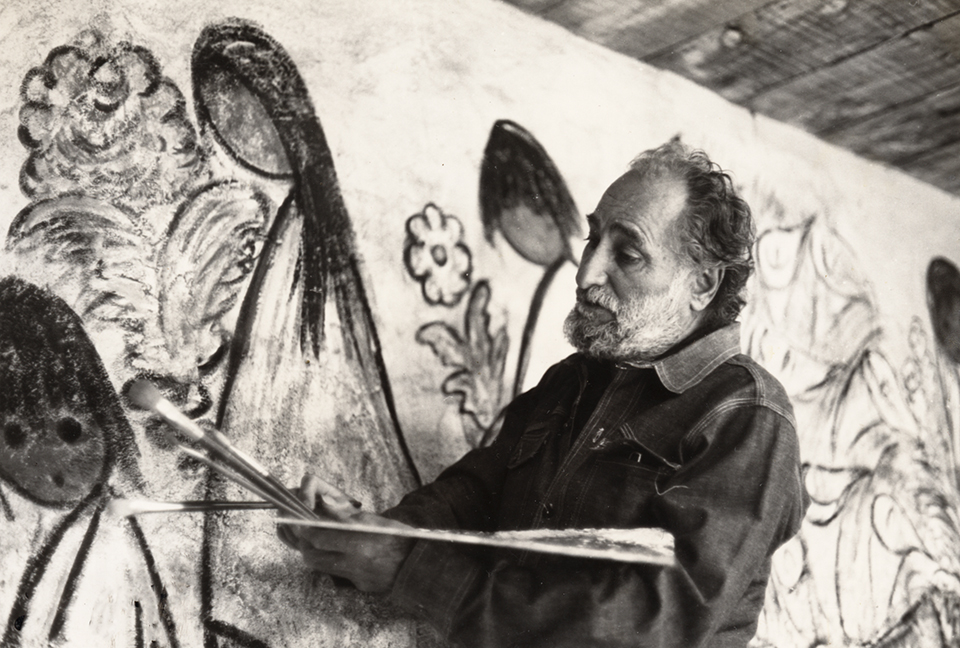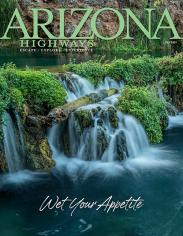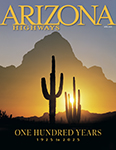
Ted DeGrazia
Artist
1909–1982

Then-Arizona Highways Editor Joe Stacey once wrote that had Mary Helen Carlson — the wife of Stacey’s predecessor, Raymond Carlson — not discovered Ted DeGrazia in the 1940s, the artist might have made his living as “Arizona’s most illustrious bar mural painter.” And while Carlson introduced DeGrazia to an international audience, the prolific Italian from Morenci more than returned the favor, helping to establish Arizona Highways as a publisher of fine art, not just great photography.
DeGrazia’s early work brimmed with social and political realism, but over the decades, the magazine’s readers watched him move away from that style in favor of commercial appeal. That evolution still inspires debate among art critics, some of whom also note DeGrazia’s penchant for self-promotion. But there’s no debating his skill with a palette knife or the joy he took in portraying the people and landscapes of the American Southwest.
His kindness, too, touched the magazine’s readers multiple times — such as in September 1971, when an original DeGrazia work appeared in the magazine. “We feel that Ted’s Little Cocopah Indian Girl is the finest pastel he has ever done,” the accompanying text read, adding that for $5, readers could buy a print of the painting to support the Yuma area’s imperiled Cocopah Tribe. “So long as there is one of God’s creatures to help,” the writer predicted, “Ted will talk it over with his angels and from his Santo Bandido heart will come another inspired deed.”
Less than a decade later, Raymond Carlson was retired and facing money troubles. DeGrazia established a trust in Carlson’s name and donated two more original works, and Arizona Highways sold prints of them for $7 apiece. The project raised $60,000, the equivalent of more than $250,000 today, for the Raymond Carlson Trust, which saw DeGrazia’s old friend through the final few years of his life. Not bad for a reformed “bar mural painter.”
— Noah Austin

Arizona Highways Inaugural Hall of Fame Inductees

